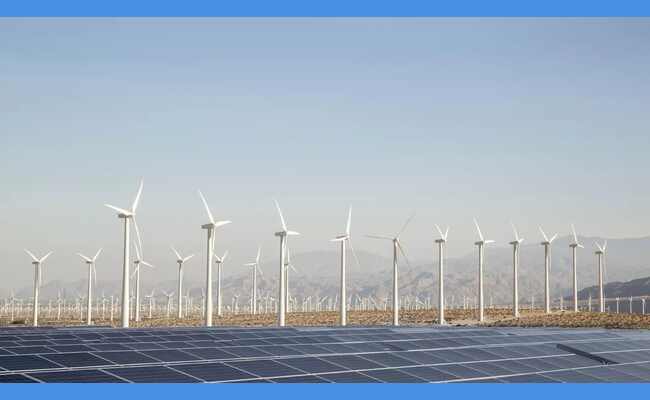
How To Make A Logo Online With Details 2023
July 24, 2023
Useful Information You Should Know About Regenerative Medicine
August 25, 2023From Solar to Wind: Breaking Down the Different Forms of Green Energy is our today’s topic. In recent years, there has been a growing interest in finding sustainable and renewable sources of energy, and Utility Bidder is here to help. As the effects of climate change become more apparent, individuals, businesses, and governments are looking for ways to reduce their carbon footprint and transition to cleaner forms of energy. However, many people are still unclear about the differences between these two forms of green energy.
In this blog post, we will explore the various forms of green energy, with a particular focus on solar and wind power. We will examine how each form works, its advantages and disadvantages, and the factors that determine which form is best suited for different settings. By breaking down the different forms of green energy, we hope to provide a comprehensive overview of this growing industry and help individuals and businesses make informed decisions about their energy consumption.
From Solar to Wind: Breaking Down the Different Forms of Green Energy

1. Solar Energy: Harnessing the Sun’s Power
Solar energy, as the name suggests, is derived from the sun’s rays. It is one of the most popular and widely used forms of renewable energy. Solar panels, also known as photovoltaic (PV) panels, are used to capture the sun’s energy and convert it into electricity. Also, in some cases, solar energy is used to heat water or provide other forms of energy.
The process involves the use of semiconductor materials such as silicon, which are capable of generating an electric current when exposed to sunlight. The electricity produced can be used to power homes, businesses, and even entire communities. Solar energy is a clean and sustainable source of energy with no emissions or pollution.
2. Wind Energy: Converting Wind to Electricity
Wind turbines are the most common method of harnessing wind energy and work by using large blades to capture the kinetic energy of the wind and convert it into rotational energy. This energy is then transformed into electrical energy through the use of a generator. The electricity produced can be used to power homes, businesses, and even entire communities.
Wind energy has a number of advantages over other forms of green energy, including its potential for scalability, low operating costs, and lack of emissions. Additionally, wind energy can be harnessed in both small-scale and large-scale operations, making it a versatile and accessible option for a wide range of applications.
3. Hydroelectric Energy: Capturing Flowing Water
Hydroelectric energy is a form of renewable energy that harnesses the power of moving water to generate electricity. It is considered to be one of the most efficient and consistent forms of green energy production, as it relies on a steady source of water flow to generate electricity.
Hydroelectric power plants typically use dams to capture the energy of flowing water and convert it into electrical energy through the use of turbines and generators. The amount of electricity generated depends on the volume and speed of the water flow, which can be influenced by seasonal changes, weather patterns, and other factors.
4. Geothermal Energy: Tapping Into Heat Underground
This energy source is becoming increasingly popular due to its reliability and consistency, as it is not dependent on weather conditions like solar or wind energy. Geothermal energy is produced by harnessing the heat from hot water and steam reservoirs located beneath the Earth’s surface.
This heat can be used to power turbines and generate electricity. The process of harnessing geothermal energy involves drilling deep into the Earth’s crust to access the heat reservoirs. While this process can be expensive, the long-term benefits of geothermal energy make it a viable option for many countries and companies looking to reduce their carbon footprint and reliance on non-renewable sources of energy.
5. Biomass Energy: Utilizing Organic Matter
Biomass energy is a form of renewable energy that utilizes organic matter to generate electricity or thermal energy. This organic matter includes wood, crop residues, municipal solid waste, and even methane gas from landfills. Biomass energy is considered to be a carbon-neutral form of energy, as the carbon dioxide released during combustion is offset by the carbon dioxide absorbed by the plants during their growth.
Additionally, biomass energy can provide a reliable source of energy in areas where other forms of renewable energy, such as solar or wind, may not be as feasible due to weather conditions or geographical limitations. While there are some concerns regarding the sustainability of biomass energy, such as the impact on land use and potential competition with food production, advancements in technology have led to more efficient and eco-friendly methods of utilizing biomass for energy production.
6. Tidal Energy: Harnessing Ocean Currents
Tidal energy is a type of hydropower that harnesses the kinetic energy of ocean currents to generate electricity. This is achieved through the use of tidal turbines or underwater turbines that spin as water flows through them, generating electricity in the process. One of the benefits of tidal energy is that it is highly predictable, as tides are regular and can be forecasted with a high degree of accuracy.
Additionally, tidal energy is a clean source of energy that does not produce greenhouse gas emissions or other pollutants. However, there are also challenges associated with tidal energy, including high installation and maintenance costs, as well as potential impacts on marine life and habitats. Despite these challenges, tidal energy remains a promising form of green energy that has the potential to play a significant role in our transition to a more sustainable future.
In Conclusion
The shift towards renewable energy has become a global movement, and rightly so. While solar energy continues to be a popular choice for households and commercial buildings, wind energy has emerged as a strong contender in the green energy space. Both solar and wind energy have their unique advantages and challenges, and it is important to weigh them against each other when considering which form of green energy to adopt.
It is clear that both solar and wind energy are making significant contributions towards reducing our carbon footprint and mitigating the effects of climate change. As technology continues to advance, we can expect these forms of green energy to become even more efficient and cost-effective, leading to a brighter and more sustainable future for all.


